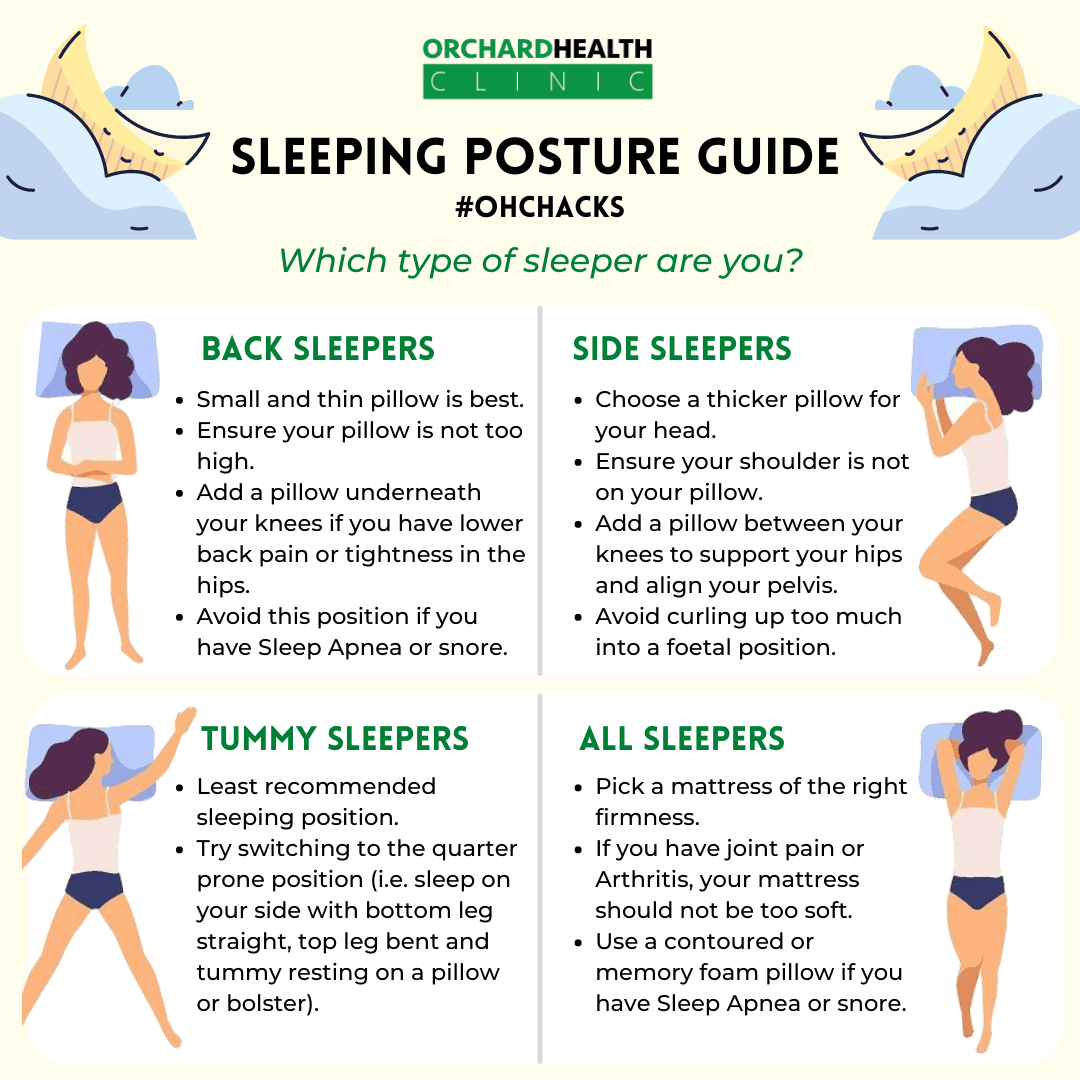Why Sleep Position Matters
We spend about a third of our lives sleeping, and your position can significantly impact how your body recovers and repairs itself overnight. A good sleeping posture keeps your spine aligned, reducing the risk of aches and pains when you wake up. On the other hand, an improper sleep position can increase stiffness and discomfort, leading to poor-quality sleep.
The Best Sleeping Position
The key to a restful sleep is choosing a position that keeps your spine aligned from head to hips. While the perfect position varies depending on your personal health needs, back and side sleeping are generally considered better for spinal health than stomach sleeping. These positions allow your spine to remain supported and balanced, reducing pressure on your muscles and joints, which promotes recovery.
Side Sleeping: A Healthy Option
If you’re dealing with snoring, heartburn, or back pain, side sleeping might be especially beneficial. It can reduce snoring, minimize heartburn symptoms, and help prevent back pain. In fact, some studies have shown that adults with back pain experienced significant relief after just four weeks of sleeping on their side or back.
Back Sleeping: Ideal for Neck and Nasal Issues
If you struggle with neck pain or nasal congestion, sleeping on your back may provide the most relief. This position helps evenly distribute your body weight, taking pressure off your neck and promoting better airflow to ease congestion.
Stomach Sleeping: Proceed with Caution
Stomach sleeping is often considered the least favorable position for spinal alignment. While it may feel comfortable for some, it can lead to neck strain and increased pressure on the spine. However, if you prefer this position, using the right pillow and mattress can help minimize discomfort and support spinal alignment.
Adjusting to a New Sleep Position
Changing your sleep position takes time, but it can make a big difference in how you feel in the morning. If you’re experiencing discomfort or sleep issues, consider experimenting with a new position. While stomach sleeping may feel natural, transitioning to side or back sleeping could lead to better spinal health and more restful sleep.
Key Takeaways:
- The best sleeping position supports natural spine alignment from head to hips.
- Back and side sleeping are generally better than stomach sleeping.
- Side sleeping can help reduce snoring, heartburn, and back pain.
- Sleeping on your back is ideal for neck pain and nasal congestion.
- Your sleep position can either support or hinder your body’s repair and recovery during rest.
